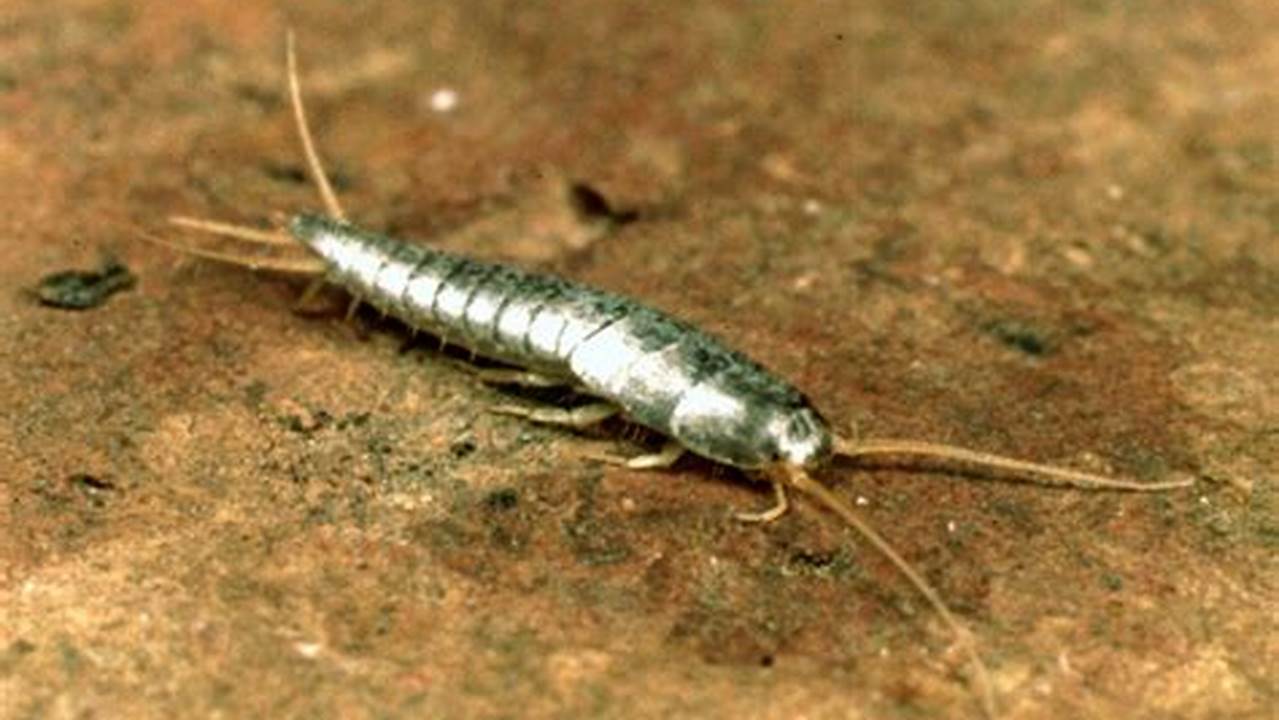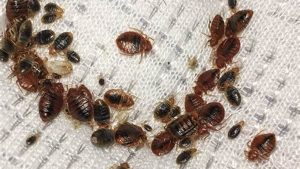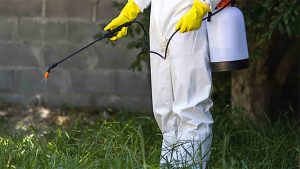Silverfish are small, wingless insects that are common household pests. They are known for their silvery appearance and their preference for dark, damp places. Where silverfish live is an important consideration for homeowners, as they can cause damage to food, clothing, and other items. One common place where silverfish live is in the bathroom, as they are attracted to the moisture and humidity.
Understanding where silverfish live is important for preventing and controlling infestations. By identifying the areas where silverfish are most likely to be found, homeowners can take steps to eliminate their hiding places and reduce the risk of damage. Historically, silverfish have been known to infest homes for centuries, with records of their presence dating back to the 16th century.
In this article, we will explore the various places where silverfish live, discuss the reasons why they are attracted to these areas, and provide tips for preventing and controlling infestations.
Where Silverfish Live
Understanding the various places where silverfish live is crucial for effective pest control and prevention. These tiny, wingless insects are commonly found in dark, damp areas, and their presence can indicate moisture issues or poor ventilation.
- Bathrooms
- Basements
- Attics
- Kitchens
- Closets
- Laundry rooms
- Crawl spaces
- Under sinks
Silverfish are attracted to moisture, carbohydrates, and cellulose. They feed on a variety of materials, including paper, cardboard, fabrics, and even glue. By identifying the areas where silverfish are most likely to be found, homeowners can take steps to eliminate their hiding places and reduce the risk of damage. Common preventive measures include dehumidifying damp areas, sealing cracks and gaps, and storing food and other items in airtight containers.
Bathrooms
Bathrooms are a common place where silverfish live due to the presence of moisture and humidity. Silverfish are attracted to damp environments, and bathrooms provide an ideal habitat with their warm, humid conditions. They are often found hiding in dark, undisturbed areas of the bathroom, such as under sinks, in cabinets, or behind toilets. The moisture from showers, baths, and leaks can create the perfect environment for silverfish to thrive.
In addition to moisture, bathrooms also provide silverfish with a food source. Silverfish feed on a variety of materials, including paper, cardboard, and fabrics. Bathrooms often contain these materials in the form of toilet paper, paper towels, and bath mats. Silverfish can also feed on the glue used in wallpaper and flooring, as well as the dust and hair that accumulates in bathrooms.
Understanding the connection between bathrooms and silverfish can help homeowners take steps to prevent and control infestations. By reducing moisture and eliminating food sources, homeowners can make their bathrooms less attractive to silverfish. This can be done by fixing leaks, using a dehumidifier, and storing items in airtight containers. Regularly cleaning bathrooms and removing clutter can also help to reduce the risk of silverfish infestations.
Basements
Basements are a common place where silverfish live due to the presence of moisture and darkness. Silverfish are attracted to damp environments, and basements often provide an ideal habitat with their cool, humid conditions. They are often found hiding in dark, undisturbed areas of the basement, such as in boxes, under furniture, or behind appliances. The moisture from leaks, flooding, or poor ventilation can create the perfect environment for silverfish to thrive.
In addition to moisture, basements also provide silverfish with a food source. Silverfish feed on a variety of materials, including paper, cardboard, and fabrics. Basements often contain these materials in the form of stored items, insulation, and building materials. Silverfish can also feed on the glue used in flooring and wallpaper, as well as the dust and hair that accumulates in basements.
Understanding the connection between basements and silverfish can help homeowners take steps to prevent and control infestations. By reducing moisture and eliminating food sources, homeowners can make their basements less attractive to silverfish. This can be done by fixing leaks, using a dehumidifier, and storing items in airtight containers. Regularly cleaning basements and removing clutter can also help to reduce the risk of silverfish infestations.
Overall, basements are a critical component of where silverfish live due to the presence of moisture and darkness. By understanding this connection, homeowners can take steps to prevent and control silverfish infestations in their homes.
Attics
Attics are a common place where silverfish live due to the presence of moisture and darkness. Silverfish are attracted to damp environments, and attics often provide an ideal habitat with their cool, humid conditions. They are often found hiding in dark, undisturbed areas of the attic, such as in boxes, under insulation, or behind stored items. The moisture from leaks, poor ventilation, or condensation can create the perfect environment for silverfish to thrive.
In addition to moisture, attics also provide silverfish with a food source. Silverfish feed on a variety of materials, including paper, cardboard, and fabrics. Attics often contain these materials in the form of stored items, insulation, and building materials. Silverfish can also feed on the glue used in flooring and wallpaper, as well as the dust and hair that accumulates in attics.
Understanding the connection between attics and silverfish can help homeowners take steps to prevent and control infestations. By reducing moisture and eliminating food sources, homeowners can make their attics less attractive to silverfish. This can be done by fixing leaks, using a dehumidifier, and storing items in airtight containers. Regularly cleaning attics and removing clutter can also help to reduce the risk of silverfish infestations.
Overall, attics are a critical component of where silverfish live due to the presence of moisture and darkness. By understanding this connection, homeowners can take steps to prevent and control silverfish infestations in their homes. Additionally, understanding the factors that contribute to silverfish infestations in attics can be applied to other areas of the home or similar environments where moisture and darkness may be present.
Kitchens
Kitchens are a common place where silverfish live due to the presence of moisture, food, and darkness. Silverfish are attracted to damp environments, and kitchens often provide an ideal habitat with their warm, humid conditions. Kitchens also provide silverfish with a variety of food sources, including crumbs, spills, and pet food. Additionally, the dark, undisturbed areas of kitchens, such as under sinks, in cabinets, and behind appliances, provide silverfish with ideal hiding places.
The presence of moisture is a critical factor in determining where silverfish live. Silverfish require a humid environment to survive, and kitchens often provide this due to the presence of sinks, dishwashers, and other appliances that generate moisture. Additionally, leaks or poor ventilation can contribute to moisture problems in kitchens, making them even more attractive to silverfish.
Understanding the connection between kitchens and silverfish can help homeowners take steps to prevent and control infestations. By reducing moisture and eliminating food sources, homeowners can make their kitchens less attractive to silverfish. This can be done by fixing leaks, using a dehumidifier, and storing food in airtight containers. Regularly cleaning kitchens and removing clutter can also help to reduce the risk of silverfish infestations.
Overall, kitchens are a critical component of where silverfish live due to the presence of moisture, food, and darkness. By understanding this connection, homeowners can take steps to prevent and control silverfish infestations in their homes. Additionally, understanding the factors that contribute to silverfish infestations in kitchens can be applied to other areas of the home or similar environments where moisture, food, and darkness may be present.
Closets
Closets are a common place where silverfish live due to the presence of darkness, moisture, and food sources. Silverfish are attracted to dark, undisturbed areas, and closets often provide an ideal habitat with their lack of light and minimal disruption. Additionally, the moisture from leaks, poor ventilation, or damp clothing can create a humid environment that is attractive to silverfish. Closets also provide silverfish with a variety of food sources, including paper, cardboard, fabrics, and glue.
The presence of moisture is a critical factor in determining where silverfish live. Silverfish require a humid environment to survive, and closets often provide this due to the presence of damp clothing, leaks, or poor ventilation. Additionally, closets are often used to store items that can trap moisture, such as bedding, towels, and shoes. These items can create a microclimate that is ideal for silverfish to thrive.
Understanding the connection between closets and silverfish can help homeowners take steps to prevent and control infestations. By reducing moisture and eliminating food sources, homeowners can make their closets less attractive to silverfish. This can be done by fixing leaks, using a dehumidifier, and storing items in airtight containers. Regularly cleaning closets and removing clutter can also help to reduce the risk of silverfish infestations.
Overall, understanding the connection between closets and where silverfish live can help homeowners take steps to prevent and control infestations. Additionally, understanding the factors that contribute to silverfish infestations in closets can be applied to other areas of the home or similar environments where moisture, darkness, and food sources may be present.
Laundry rooms
Laundry rooms are a common place where silverfish live, as they offer a combination of moisture, darkness, and food sources. These factors create an ideal environment for silverfish to thrive and reproduce.
- Moisture Laundry rooms are often damp and humid due to the presence of water from washing machines, dryers, and wet clothing. This moisture provides silverfish with the hydration they need to survive and lay eggs.
- Darkness Laundry rooms are typically dark, with little natural light. This lack of light creates a safe and undisturbed environment for silverfish, which are nocturnal insects.
- Food sources Laundry rooms often contain a variety of food sources for silverfish, including lint, paper, cardboard, and fabrics. Silverfish can also feed on the glue used in flooring and wallpaper, as well as the dust and hair that accumulates in laundry rooms.
- Hiding places Laundry rooms provide silverfish with a variety of hiding places, such as under appliances, in cabinets, and behind piles of laundry. These hiding places offer silverfish protection from predators and disturbances.
In conclusion, the combination of moisture, darkness, food sources, and hiding places make laundry rooms an ideal habitat for silverfish. By understanding the factors that contribute to silverfish infestations in laundry rooms, homeowners can take steps to prevent and control these pests.
Crawl spaces
Crawl spaces are a common place where silverfish live, as they offer a combination of moisture, darkness, and food sources. These factors create an ideal environment for silverfish to thrive and reproduce.
Crawl spaces are often damp and humid due to poor ventilation and the presence of water pipes or leaks. This moisture provides silverfish with the hydration they need to survive and lay eggs. Crawl spaces are also typically dark, with little natural light. This lack of light creates a safe and undisturbed environment for silverfish, which are nocturnal insects.
In addition to moisture and darkness, crawl spaces often contain a variety of food sources for silverfish, including lint, paper, cardboard, and fabrics. Silverfish can also feed on the glue used in flooring and wallpaper, as well as the dust and hair that accumulates in crawl spaces. Crawl spaces also provide silverfish with a variety of hiding places, such as under appliances, in cabinets, and behind piles of stored items.
In conclusion, the combination of moisture, darkness, food sources, and hiding places make crawl spaces an ideal habitat for silverfish. Understanding the connection between crawl spaces and where silverfish live can help homeowners take steps to prevent and control these pests. One practical application of this understanding is to seal up any cracks or gaps in the foundation of a home to prevent silverfish from entering the crawl space. Additionally, homeowners can reduce moisture in the crawl space by using a dehumidifier or by improving ventilation.
Under sinks
Under sinks are a common place for silverfish to live due to the combination of moisture, darkness, and food sources that they offer. Silverfish are attracted to damp environments, and the area under sinks often provides these conditions due to leaks, condensation, or poor ventilation. Additionally, the dark, undisturbed nature of these areas provides silverfish with a safe place to hide and lay their eggs. Finally, under sinks often contain a variety of food sources for silverfish, such as crumbs, spills, and pet food.
- Moisture The area under sinks is often damp and humid due to leaks, condensation, or poor ventilation. This moisture provides silverfish with the hydration they need to survive and lay eggs.
- Darkness The area under sinks is typically dark, with little natural light. This lack of light creates a safe and undisturbed environment for silverfish, which are nocturnal insects.
- Food sources Under sinks often contain a variety of food sources for silverfish, such as crumbs, spills, and pet food. Silverfish can also feed on the glue used in flooring and wallpaper, as well as the dust and hair that accumulates under sinks.
- Hiding places The area under sinks provides silverfish with a variety of hiding places, such as behind pipes, in cabinets, and in piles of stored items. These hiding places offer silverfish protection from predators and disturbances.
In conclusion, the combination of moisture, darkness, food sources, and hiding places makes the area under sinks an ideal habitat for silverfish. Understanding the connection between under sinks and where silverfish live can help homeowners take steps to prevent and control these pests. One practical application of this understanding is to seal up any leaks or gaps around sinks and to regularly clean the area under sinks to remove any food sources or debris that may attract silverfish.
Frequently Asked Questions about Where Silverfish Live
This section addresses common questions and misconceptions about where silverfish live, providing concise and informative answers to help you better understand their habitats and behaviors.
Question 1: What are the common areas where silverfish live?
Answer: Silverfish are commonly found in damp, dark areas of homes and buildings, such as bathrooms, basements, attics, kitchens, closets, laundry rooms, crawl spaces, and under sinks.
Question 2: Why are silverfish attracted to these areas?
Answer: Silverfish are attracted to damp, dark environments because they require moisture to survive and thrive. Additionally, these areas often provide food sources, such as paper, cardboard, fabrics, and other organic materials.
Question 3: Are there any specific factors that contribute to silverfish infestations?
Answer: Factors that contribute to silverfish infestations include high humidity, poor ventilation, water leaks, and an abundance of food sources. Addressing these factors through measures such as dehumidification, ventilation improvement, and regular cleaning can help prevent infestations.
Question 4: How can I identify areas where silverfish may be hiding?
Answer: Look for signs of silverfish activity, such as shed skin, droppings, or damage to paper or fabrics. Inspect areas that are damp, dark, and undisturbed, such as basements, attics, and closets.
Question 5: Are silverfish dangerous to humans or pets?
Answer: Silverfish are not typically considered dangerous to humans or pets. However, they can cause damage to paper, fabrics, and other household items, and their presence can be a nuisance.
Question 6: What are some effective methods for controlling silverfish populations?
Answer: Controlling silverfish populations involves reducing moisture, eliminating food sources, and using traps or insecticides. Dehumidifiers, ventilation fans, and regular cleaning can help reduce moisture. Store food in airtight containers and dispose of garbage promptly to eliminate food sources. Silverfish traps and insecticides can also be used to target infestations.
These FAQs provide key insights into where silverfish live and the factors that contribute to their presence. Understanding these aspects is crucial for effective silverfish control and prevention. As we delve further into the discussion, we will explore strategies for identifying and eliminating silverfish infestations, ensuring a pest-free and comfortable living environment.
Transition to the next section: Identifying and eliminating silverfish infestations
Tips for Preventing and Eliminating Silverfish Infestations
To combat silverfish infestations effectively, implementing a combination of preventative and control measures is crucial. Here are several actionable tips to help you achieve a silverfish-free environment:
Tip 1: Reduce Moisture Levels
Silverfish thrive in moist environments. Use dehumidifiers in basements, attics, and other damp areas to control humidity levels. Ensure proper ventilation by opening windows, using exhaust fans, and repairing leaks promptly.
Tip 2: Eliminate Food Sources
Silverfish feed on paper, cardboard, and other cellulose materials. Store these items in airtight containers or plastic bags. Keep food in sealed containers and dispose of garbage regularly to minimize food availability for silverfish.
Tip 3: Maintain a Clean Environment
Regularly clean areas where silverfish may hide, such as under sinks, in closets, and in basements. Vacuum carpets and rugs thoroughly to remove dust, hair, and other debris that can attract silverfish.
Tip 4: Seal Entry Points
Inspect your home for cracks or gaps around windows, doors, and pipes. Seal these entry points with caulk or weatherstripping to prevent silverfish from entering your living space.
Tip 5: Use Natural Repellents
Certain scents act as natural repellents for silverfish. Place cedarwood chips or lavender sachets in areas where silverfish are commonly sighted. You can also apply a mixture of equal parts white vinegar and water to deter silverfish.
Tip 6: Consider Chemical Treatments
If natural methods prove ineffective, consider using chemical treatments specifically designed to target silverfish. Follow the instructions carefully and take necessary precautions when handling these products.
Tip 7: Seek Professional Help
In cases of severe infestations or persistent silverfish problems, it is advisable to contact a professional pest control service. They have the expertise and resources to effectively eliminate silverfish infestations and prevent their recurrence.
By implementing these tips, you can create an environment that is less favorable to silverfish, reducing their presence and minimizing the risk of damage to your belongings. Remember, a proactive approach to silverfish control is essential to maintaining a pest-free and comfortable living space.
Transition to the conclusion: Understanding the habits and preferred environments of silverfish is key to developing effective prevention and control strategies. By following these tips, you can successfully eliminate silverfish infestations and ensure a silverfish-free living environment.
Conclusion
Throughout this article, we have explored the multifaceted topic of “where silverfish live.” By delving into the specific environments and conditions that attract silverfish, we have gained valuable insights into their behavior and preferences.
Key takeaways from our discussions include the importance of moisture, darkness, and the availability of food sources in silverfish habitats. These factors, when combined, create an ideal environment for silverfish to thrive and reproduce. Understanding these interconnections empowers us to implement effective prevention and control measures.
As we move forward, it is crucial to remember that silverfish infestations can be a nuisance and potentially cause damage to household items. By adopting the strategies outlined in this article, we can create environments that are less hospitable to silverfish, minimizing their presence and safeguarding our living spaces. Preventing silverfish infestations not only enhances the comfort of our homes but also protects our belongings from potential damage.



